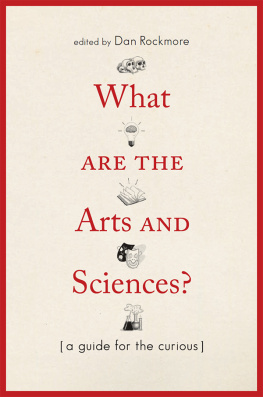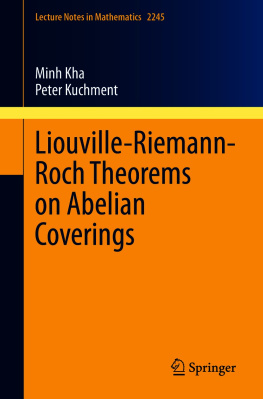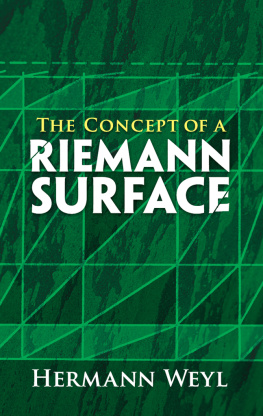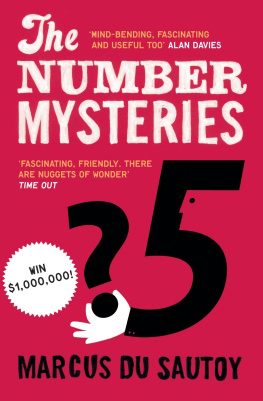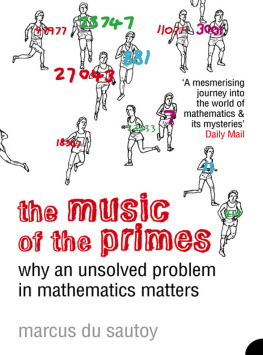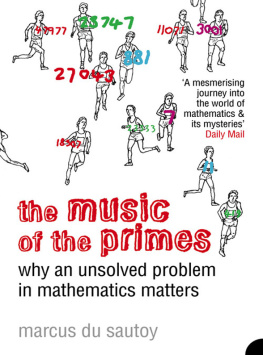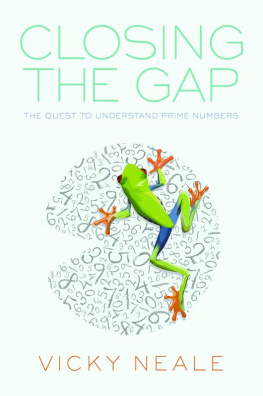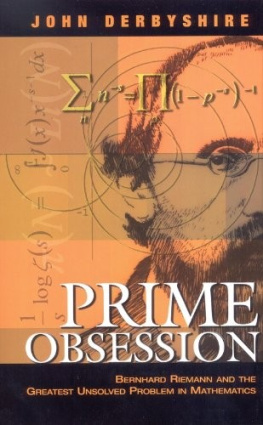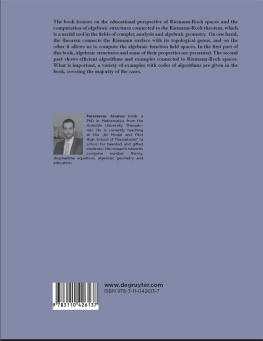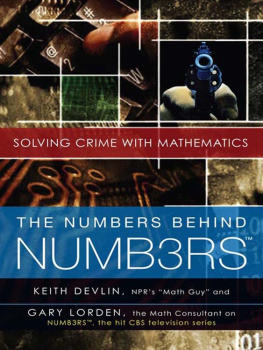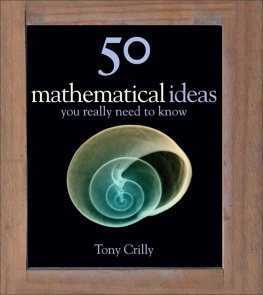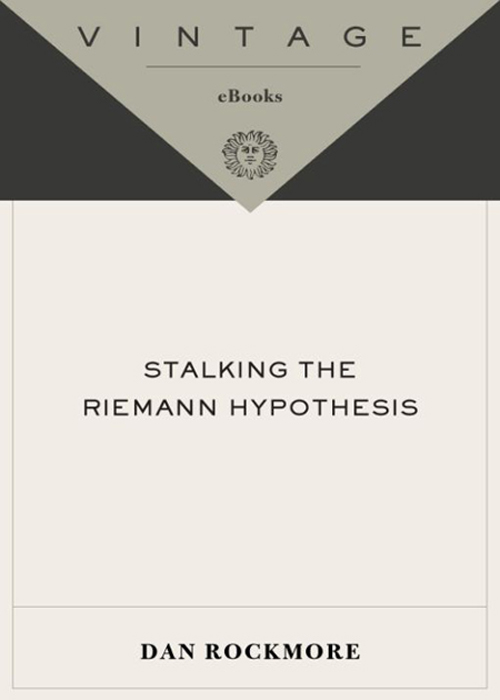
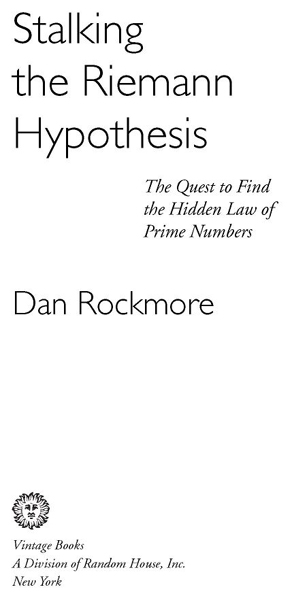
Table of Contents
For Loren Butler Feffer (19622003),
scholar, athlete, and dear friend
ACKNOWLEDGMENTS
THE SCIENCE WRITER faces an interesting intellectual challenge. To distill years, even centuries, of scientific investigation for a broad and curious audience, while not raising the hackles of the experts in the field, is something of an intellectual tightrope walk. It is my hope that in this book I havent fallen off the wire too many times, and Im grateful to the family, friends, and colleagues who have either steadied me during this performance, or at least allowed me a soft landing from time to time. Id like to take a moment to thank some of them.
I have been lucky to have had comfortable circumstances in which to write, and I appreciate the hospitality provided to me by New York Universitys Courant Institute, the Institute for Advanced Study, the Santa Fe Institute, and of course my home turf: Dartmouth Colleges departments of mathematics and computer science. I would like to give special thanks to the Institute for Advanced Studys librarian Momota Ganguli for her help in tracking down a few hard-to-find references, as well as Dartmouth Colleges librarian Joy Weale for the quick attention she gave to my many requests for materials.
Katinka Matson helped me find a home for this book with Random House, where Marty Asher, Edward Kastenmeier, Will Sulkin, and Eric Martinez have worked hard to steer it through the shoals of the editorial and production process. Special thanks to Susan Gamer for a terrific job of copyediting.
I am grateful to the many people who read portions of the book in various stages of completion. In particular, Id like to thank Percy Deift, Freeman Dyson, Cormac McCarthy, Peter Sarnak, Craig Tracy, Harold Widom, and Peter Woit for their helpful comments and corrections, Eric Heller and Jos Leys for furnishing some key figures, and Andrew Odlyzko for providing easy access to the zeta zero data. Sincere thanks to Peter Doyle for translating the relevant pieces of the Stieltjes-Hermite correspondence, and for keeping local interest alive through his leadership of the always entertaining Riemann Seminar at Dartmouth. Peter Kostelec, a terrific scientist and friend, made many of the figures in this book, as well as many more that werent used. Bob Drake, resident folk mathematician, gave me many good comments on early versions of the manuscript and many more good squash lessons. Thanks to Laurie Snell for his close reading of an early manuscript and for his constant encouragement. Greg Leibons careful attention helped me avoid a few bloopers at the end. Of course, I take full responsibility for any errors that made it past the eagle eyes of my vigilant friends and colleagues.
My parents, Ron and Miriam; my brother Adam; my sister-in-law Alicia; and my delightful niece Lucy always have given me the luxury and benefit of a loving and supportive family. If it is true that the apple doesnt fall too far from the tree, I am lucky to have come from sturdy stock giving generous shade.
Ellenmy wife, love, confidante, and super-editorand our son, Alex, have brought to my life a light and joy that I had not thought possible. Im grateful to them every day. Through every stage of this project, my dear and now departed dog Digger was a source of constant comfort and calm. I always appreciated and now miss his nuzzling reminders of the necessity of regular breaksin good weather and bad. If there is a sonorous sentence or two in this book, it was almost surely rocked loose by the steady footfall of one of our countless but countable walks. I like to think that his playful and gentle spirit lives on in these pages.
Finally, this book is dedicated to the memory of my dear friend Loren Butler Feffer, whose keen mind, boisterous good humor, and fierce loyalty helped me through many a difficult time, both personal and professional. She is ever missed. LorenI wish you could have been there when we popped open the champagne. This ones for you.

PrologueIt All Begins with Zero
ITS ONE OF THOSE slate-gray summer days that more properly belong to mid-August than late May, one of those days in New York City when it is barely clear where the city ends and the sky begins. The hard-edged lines and Euclidean-inspired shapes that are building, sidewalk, and pavement all seem to fuse into one huge melted mass that slowly dissolves into the humid, breezeless, torpid air. On mornings like this, even this irrepressible metropolis seems to have slowed a notch, a muffled cacophony more bass than treble, as the city that never sleeps stumbles and shuffles to work.
But here in Greenwich Village, at the corner of Mercer and West Fourth streets, where we find New York Universitys Warren Weaver Hall, the hazy torpor is interrupted by a localized high-energy eddy. Here, deep in the heart of the artistic rain forest that is the Village, just across the street from the rock n rolling nightclub the Bottom Line, a stones throw from the lofts and galleries that gave birth to Jackson Pollock, Andy Warhol, and the Velvet Underground, is the home of the Courant Institute of Mathematical Sciences, where at this moment there is an excitement worthy of any gallery opening in SoHo, or any new wave, next wave, or crest-of-the-wave musical performance.
The lobby and adjacent plaza are teeming with mathematicians, a polyglot and international group, abuzz with excitement. Listen closely, and amid the multilingual, every-accent mathematical jibberjabber youll hear a lot of talk about nothing, or more properly a lot of talk about zero.
Zero is not an uncommon topic of conversation in New York, but more often than not its the placeholder zeros that are on the tip of the New Yorkers tongue. These are the zeros that stand in for the orders of magnitude by which we measure the intellectual, cultural, and financial abundance that is New York: one zero to mark the tens of ethnic neighborhoods, two for the hundreds of entertainment options, three for the thousands of restaurants, six for the millions of people, and, of course, the zeros upon zeros that mark the billions or even trillions of dollars that churn through the city every day. These are not the zeros of void, but the zeros of plenty.
But, today, just one week past Memorial Day 2002, its a zero of a different flavor which has attracted this eclectic group to downtown New York City. Here some of the worlds greatest mathematicians are meeting to discuss and possibly, just possibly, witness the resolution of the most important unsolved problem in mathematics, a problem that holds the key to understanding the basic mathematical elements that are the prime numbers. The zeros that tip the tongues of these mathematical adventurers are zetazeros, and the air is electric with the feeling that perhaps this will be the day when we lay to rest the mystery of these zeros, which constitutes the Riemannhypothesis.
For over a century mathematicians have been trying to prove the Riemann hypothesis: that is, to settle once and for all a gently asserted conjecture of Bernhard Riemann (18261866), who was a professor of mathematics at the University of Gttingen in Germany. Riemann is perhaps best known as the mathematician responsible for inventing the geometrical ideas upon which Einstein built his theory of general relativity. But in 1859, for one brief moment, Riemann turned his attention to a study of the long-familiar prime numbers. These are numbers like two, three, five, and seven, each divisible only by one and itself, fundamental numerical elements characterized by their irreducibility. Riemann took up the age-old problem of trying to find a rule which would explain the way in which prime numbers are distributed among the whole numbers, indivisible stars scattered without end throughout a boundless numerical universe.
Next page

